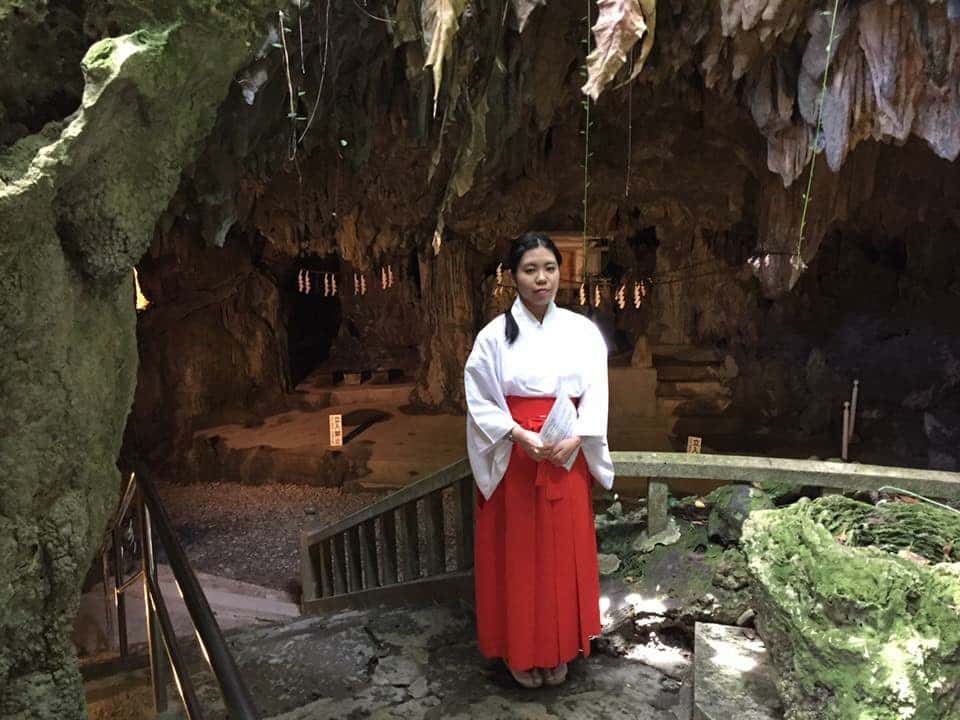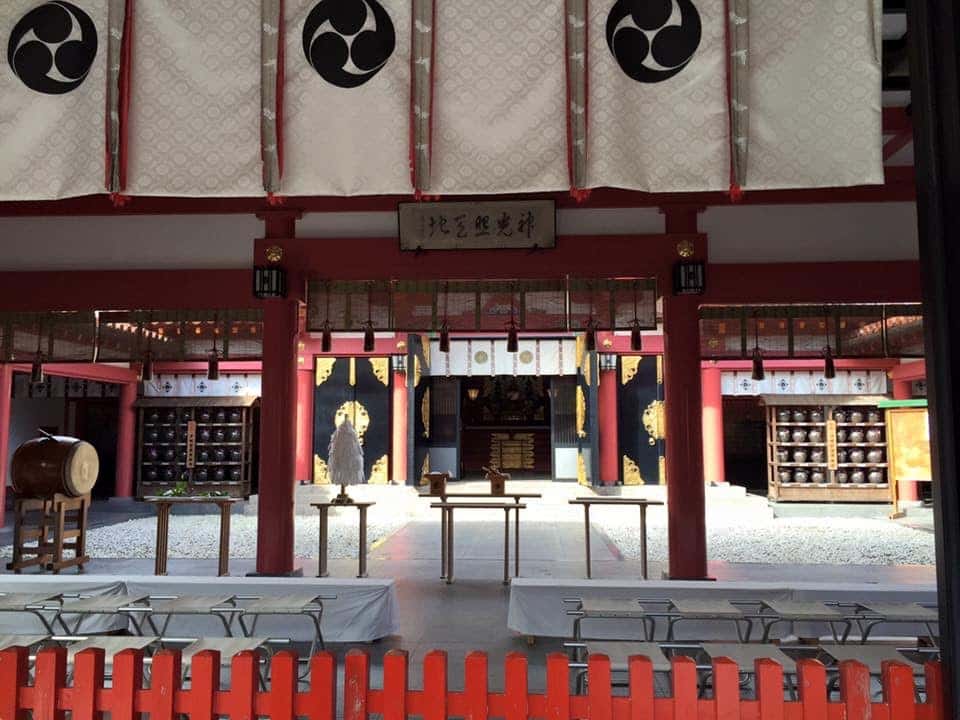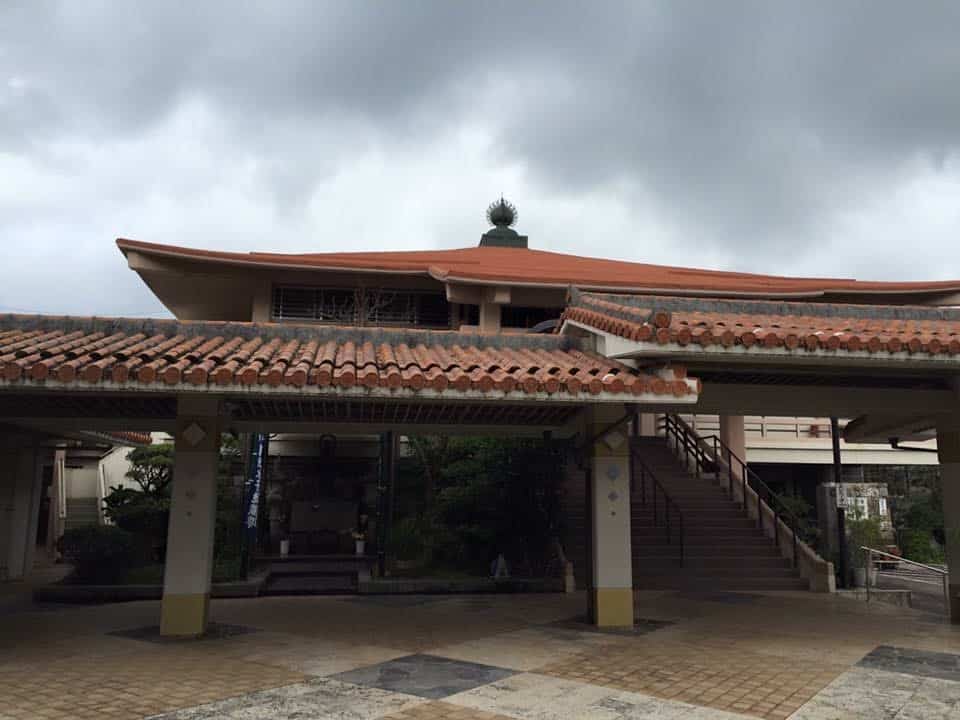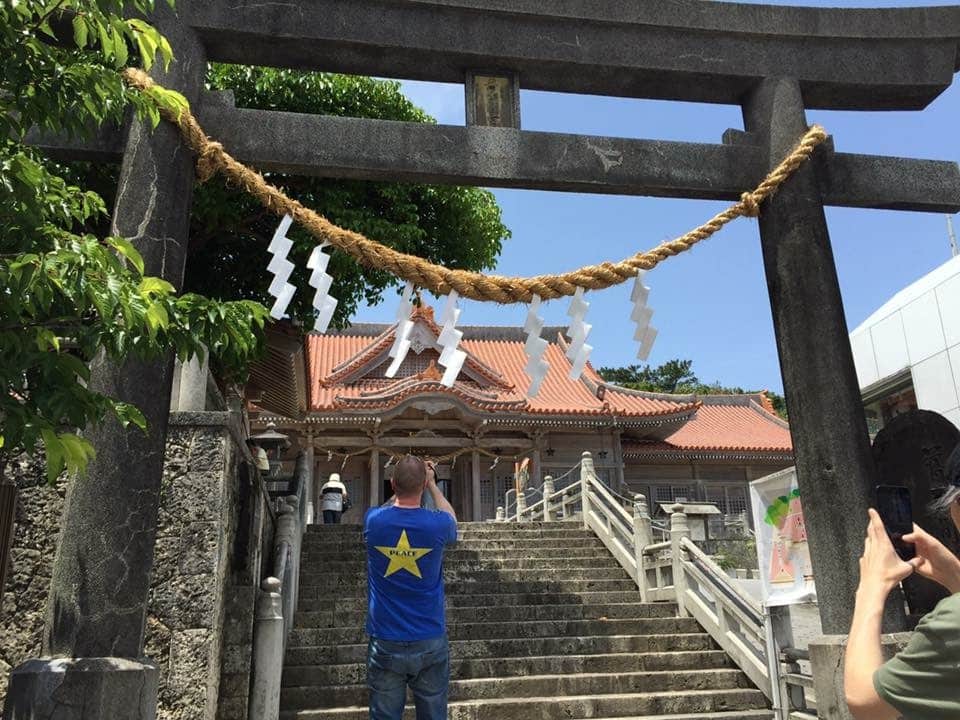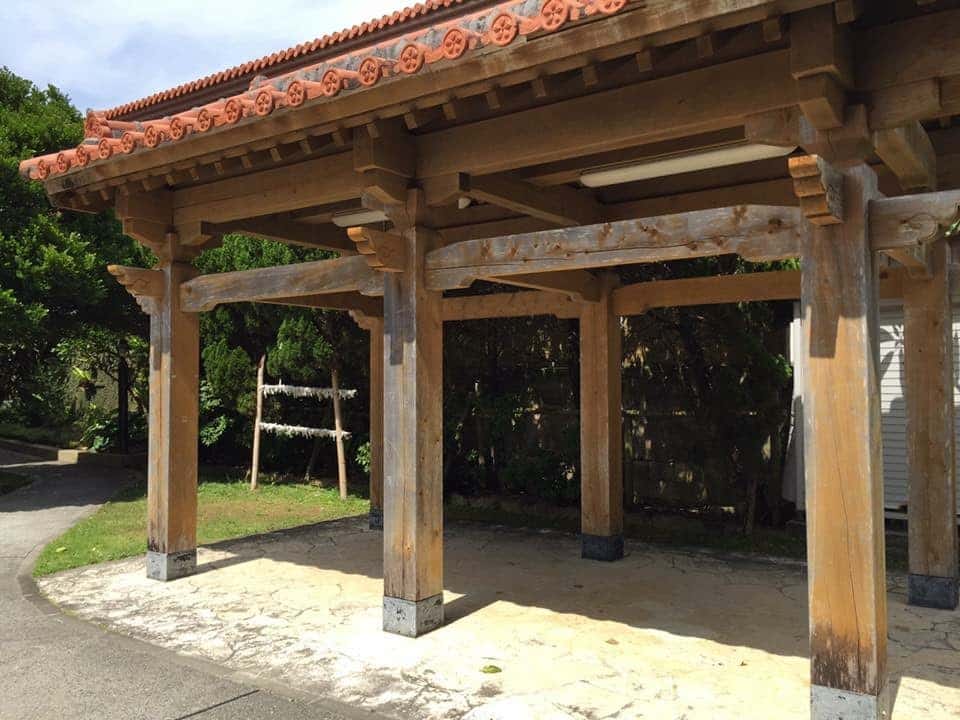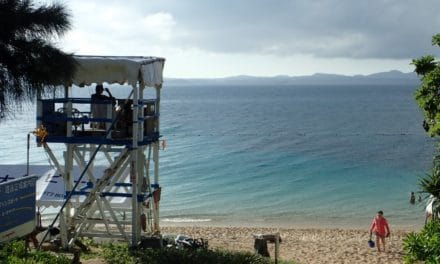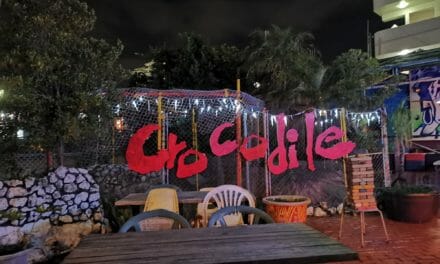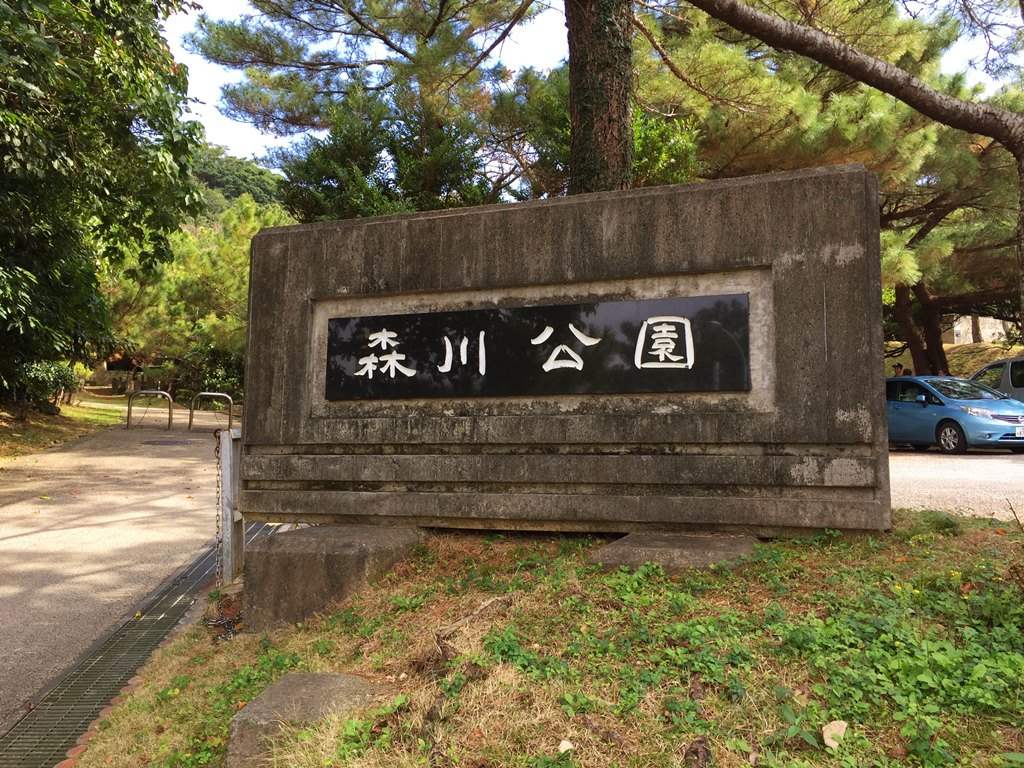Japan is a country rich in history and culture. A lot of this has centred around the two main religions; Buddhism and Shintoism. Okinawa is no exception. It is littered with both shrines (Shinto) and temples (Buddhist), both big and small. Want to get the most out of your visit to these holy grounds? Follow our guide and you won’t go wrong!
Differences between shrines and temples
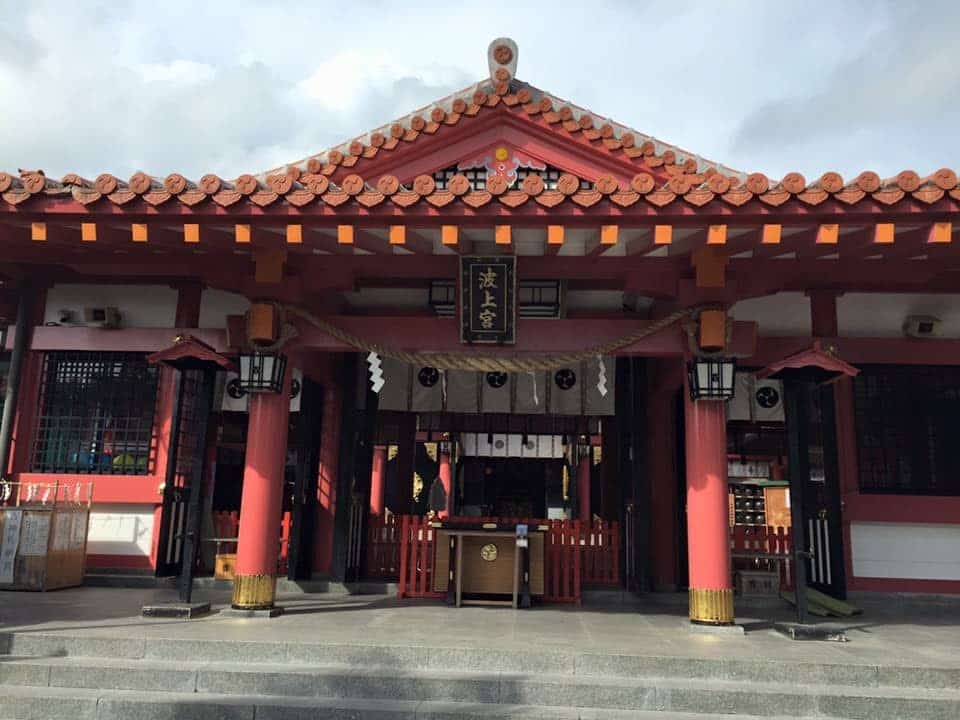 As already pointed out, shrines belong to Shinto, temples to Buddhist. The two religions are quite strongly linked due to a mingling of processes and customs over the centuries, however there are some differences. Shrines will always have a torii, or gate, through which you enter. Some Buddhist temples do too, but it isn’t an essential feature. Shrines are completely unique to Japan, whereas temple can be seen throughout Asia, with the temples of Japan sharing similar design to those of other oriental countries, such as China. Another difference is the staff. Shrines have priests, as well as attendants, and temples have monks. On Okinawa, a good example of a Shinto shrine is Futenma Shrine Caves, and for a good example of a Buddhist temple, look to Naritasan Fukusenji.
As already pointed out, shrines belong to Shinto, temples to Buddhist. The two religions are quite strongly linked due to a mingling of processes and customs over the centuries, however there are some differences. Shrines will always have a torii, or gate, through which you enter. Some Buddhist temples do too, but it isn’t an essential feature. Shrines are completely unique to Japan, whereas temple can be seen throughout Asia, with the temples of Japan sharing similar design to those of other oriental countries, such as China. Another difference is the staff. Shrines have priests, as well as attendants, and temples have monks. On Okinawa, a good example of a Shinto shrine is Futenma Shrine Caves, and for a good example of a Buddhist temple, look to Naritasan Fukusenji.
Pray like a local
 Both places serve the same purpose; worship, and whilst visitors aren’t expected to partake, they’re also welcome to if they like. For those of you who wish to be more than a casual observer, there are steps you take in order to speak to the Gods. Firstly, at both, you need to purify yourself. This is known as misogi. It’s designed to rid you of any evil spirits that may be hanging about, and to cleanse yourself of any sin. You’ll see what looks like a trough, usually made of stone but can be made of other materials, filled with water and with ladles that sit on a stand within it. This is the site for misogi. Here’s how to do it:
Both places serve the same purpose; worship, and whilst visitors aren’t expected to partake, they’re also welcome to if they like. For those of you who wish to be more than a casual observer, there are steps you take in order to speak to the Gods. Firstly, at both, you need to purify yourself. This is known as misogi. It’s designed to rid you of any evil spirits that may be hanging about, and to cleanse yourself of any sin. You’ll see what looks like a trough, usually made of stone but can be made of other materials, filled with water and with ladles that sit on a stand within it. This is the site for misogi. Here’s how to do it:
1. With your right hand, take the ladle, scoop water, and clean your left hand.
2. Pass the ladle to your left hand, and clean your right hand.
3. Pass the ladle back to your right hand, pour water into your cupped left hand, and drink (never drink directly from the ladle).
4. Finally, use the remaining water to cleanse the ladle handle itself by gently tilting it until the water runs down it, then replace.
After this you are ready to speak to the Gods! For shrines, step up to the main area of worship, put an offering in the box provided (no set amount, but 5 yen is a good minimum), clap your hands together twice, bow your head, and say the prayer/ wish in your head. After that, step back, turn away, and exit to allow other worshippers the chance. For temples it’s similar, except no clapping. Some temples have a bell that you ring prior, otherwise personal prayer is silent. Both places will also hold services, with a priest (Shinto) or Monk (Buddhist) leading processions. You are welcome to observe, quietly, but they prefer no photography or videos to be taken. Your best bet is to observe from outside. Some of these services are personal, such as for weddings and funerals, but they can be for other, broader reasons, such as for peace or changes in season.
Luck and wishes
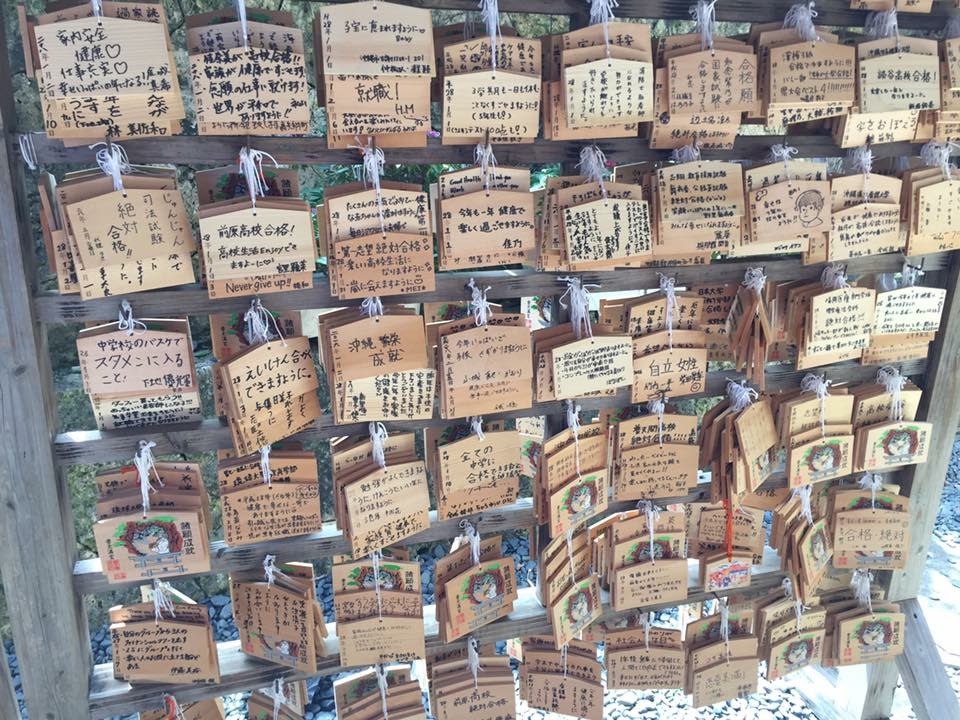 Another thing popular in both Shintoism and Buddhism here is the purchase of lucky charms, or omamori. Each place will have a little shop, allowing you to buy an omamori best befitting your needs. Big exam coming up? Expectant mother? Or maybe you just want to ward off evil spirits, there’s something for everyone. Individual places will have their own ones too, so you can come away with something unique. Most are around the 500 yen mark, with some of the bigger omamori (such as wards you put outside your house), can cost anywhere up to around 3,500 yen. These have a life expectancy; one year. So a year after purchase, you take it back to the shrine or temple you purchased it from, and place it in a collection bin. You can then buy another omamori to last you another year. What happens to the old ones? Well just after the all important New Year shrine visit, old omamori are burned ritualistically in a special fire, the belief being that the wishes held for the previous year are returned to the Gods to be heard. Another thing you can do at shrines and some temples is leave a written wish on an ema board. This is a wooden plaque used to write wishes on. Most have some sort of picture on one side, either something related to that shrine (such as a depiction of the caves at Futenma), that years Zodiac animal (for 2016, this was monkey), or perhaps even a God strongly tied to the place. These are usually 500 yen, and purchased from the same place as the omamori. A worker will offer you a pen, you (usually) write on the blank side of the ema, hang it up with the others (there is always a special area at both shrines and temples, it’ll be obvious because there will be many ema hung there), and voila! These remain for a year and then are also ritualistically burned. As far as wishes go, there is no rules. You wish for whatever you desire most. During exam times, you’ll see a lot of ema wishing for success. You don’t have to write in Japanese either, your native language is fine. You can even be creative! I’ve seen ema adorned with beautiful artwork drawn by the person making the wish!
Another thing popular in both Shintoism and Buddhism here is the purchase of lucky charms, or omamori. Each place will have a little shop, allowing you to buy an omamori best befitting your needs. Big exam coming up? Expectant mother? Or maybe you just want to ward off evil spirits, there’s something for everyone. Individual places will have their own ones too, so you can come away with something unique. Most are around the 500 yen mark, with some of the bigger omamori (such as wards you put outside your house), can cost anywhere up to around 3,500 yen. These have a life expectancy; one year. So a year after purchase, you take it back to the shrine or temple you purchased it from, and place it in a collection bin. You can then buy another omamori to last you another year. What happens to the old ones? Well just after the all important New Year shrine visit, old omamori are burned ritualistically in a special fire, the belief being that the wishes held for the previous year are returned to the Gods to be heard. Another thing you can do at shrines and some temples is leave a written wish on an ema board. This is a wooden plaque used to write wishes on. Most have some sort of picture on one side, either something related to that shrine (such as a depiction of the caves at Futenma), that years Zodiac animal (for 2016, this was monkey), or perhaps even a God strongly tied to the place. These are usually 500 yen, and purchased from the same place as the omamori. A worker will offer you a pen, you (usually) write on the blank side of the ema, hang it up with the others (there is always a special area at both shrines and temples, it’ll be obvious because there will be many ema hung there), and voila! These remain for a year and then are also ritualistically burned. As far as wishes go, there is no rules. You wish for whatever you desire most. During exam times, you’ll see a lot of ema wishing for success. You don’t have to write in Japanese either, your native language is fine. You can even be creative! I’ve seen ema adorned with beautiful artwork drawn by the person making the wish!
Best practice
A visit to a shrine or temple is an interesting experience, and a great window into a culture far removed from your own. Remember that these are active sites of worship, so show the locals the respect you would expect if it were the other way around. You don’t have to pray if you don’t want to, walking around and observing is perfectly fine. Photos and videos are also fine, just try not to invade privacy and don’t take pictures where signs ask you not to. Other than that, enjoy!
When to visit
Temples and shrines are open to visit year round, for free. Most can be visited day and night, with staff in attendance at both in daylight hours. Best time of year to visit is New Years (the first three days especially), as festivals are held with food and games, in addition to normal shrine activities.
Ready for a temple or shrine to visit here on Okinawa? Give one of these a go:
Shrines
Futenma: https://goo.gl/maps/hfVqTcJBxur
Naminoue-gu: https://goo.gl/maps/jyN13rGut6A2
Awase Bijiru: https://goo.gl/maps/Z2YNoGUjQSB2
Temples
Jingu-ji: https://goo.gl/maps/QAgn4t1SeA12
Gokoku-ji: https://goo.gl/maps/X4fpXPQ6Ee92
Naritasan fukusenji: https://goo.gl/maps/3HvBbrwmqJJ2
by Louise Dupuy
![]()

